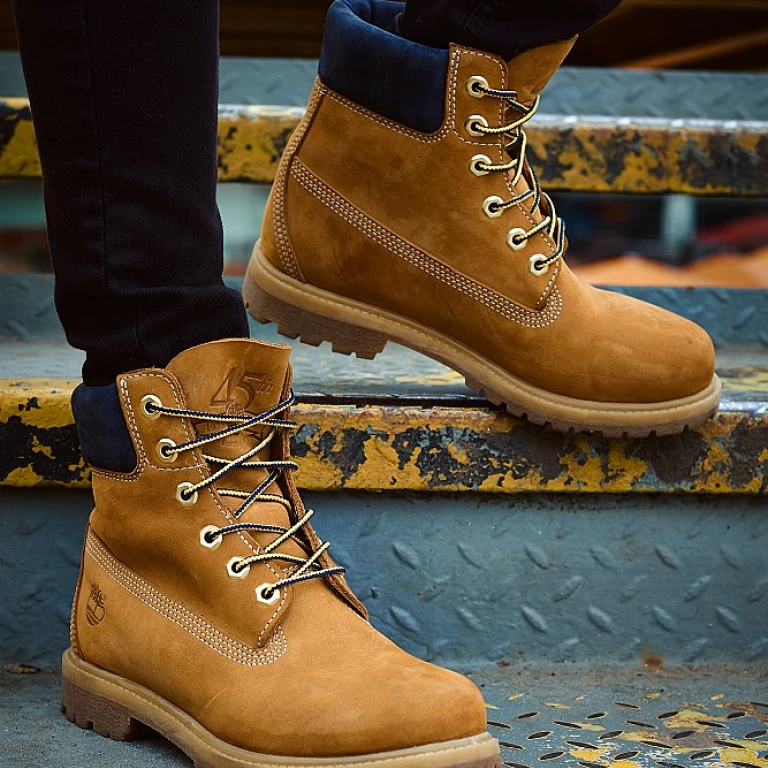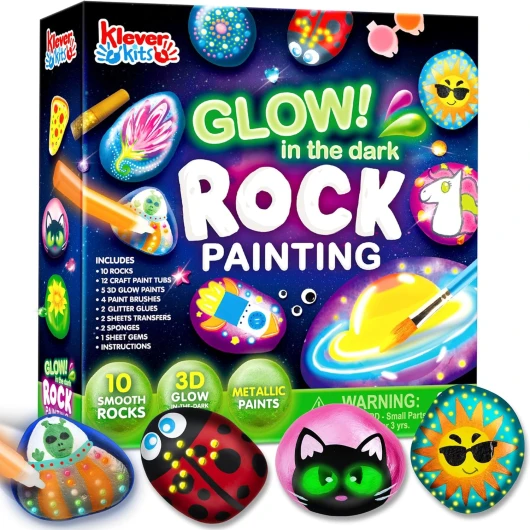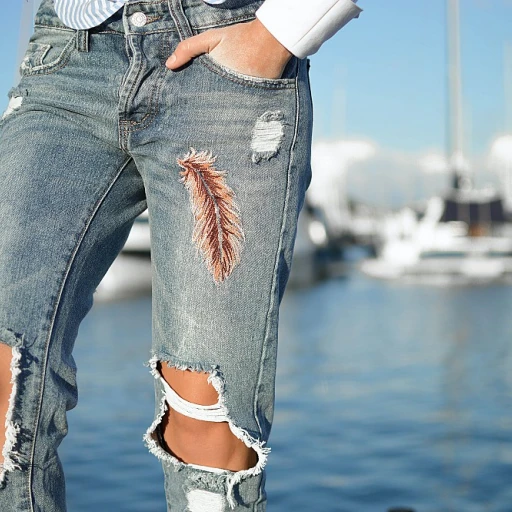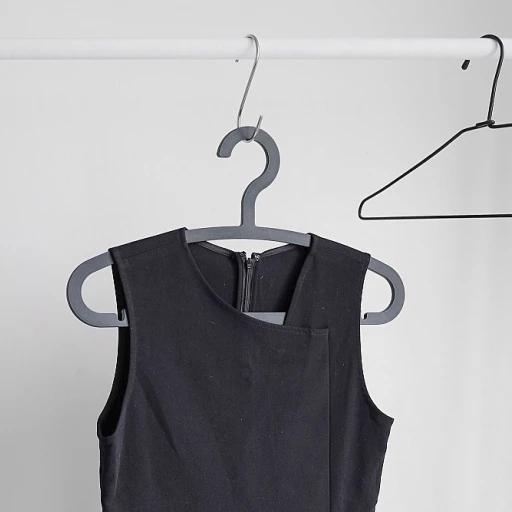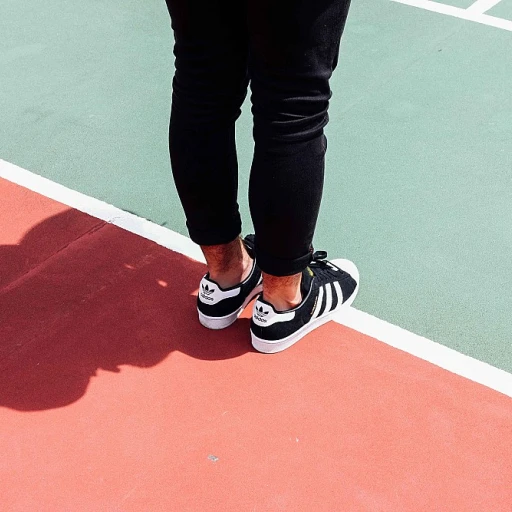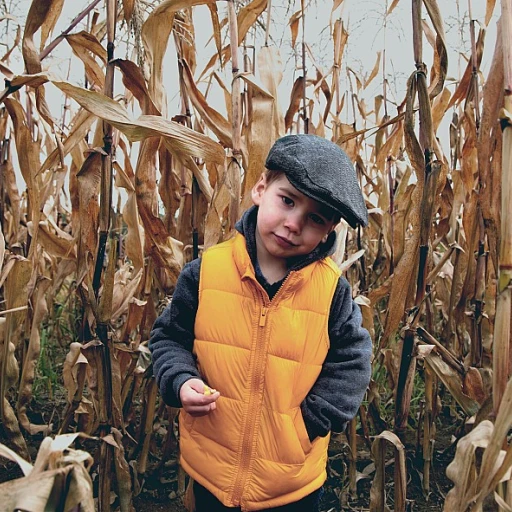The rise of designer collaborations in kids' clothing
Emergence of High-End Partnerships in Minis' Attire
Once a playing field dominated by staple children's brands, the fashion landscape for the younger set has witnessed a burgeoning trend: the infusion of luxury through designer collaborations. These alliances represent not just a melding of creative visions, but also a strategic move that's been resonating with a market hungry for novelty and distinction in children's wear.
Data indicating a steady increase in the percentage of designer collaborations within the kids' fashion sector underscores this evolution. Though exact figures fluctuate seasonally, industry insiders acknowledge a consistent upward trajectory. Experts like Charlotte Pettifer, author of 'Fabrics of the Future: The Transformation of Kids' Fashion', suggests that this growth in collaborations is responding to a potent mix of consumer demand and brand diversification strategies.
Citing reports by market research firms, such as the Global Children's Wear Market Report, it's evident that these high-end partnerships have shaped purchasing habits, steering the children's fashion industry towards a more premium segment. As consumer appetites lean towards unique and fashion-forward options for their children, brands are leveraging this edge. An excellent example of this is the recent collaboration between a storied French label and a popular cartoon franchise, proving that whimsy and sophistication can indeed merge flawlessly in kids' fashion.
The repercussions of this shift are not solely aesthetic but deeply impactful on trend formulation. Insights from expert analyses reveal that designer collaborations are often the birthplace of new trends, frequently trickling down into mainstream children's clothing lines.
Addressing potential criticisms, it's clear that while the luster of such collaborations adds an air of exclusivity, questions regarding sustainability and ethics also arise—topics to be explored further along this narrative. The complexity of balancing exclusivity with accessibility forms a tension point within the industry; however, the consistent excitement generated around these launches indicates a strong market engagement with the trend.
For a more comprehensive understanding of how these exclusive designer collaborations are reinventing children's fashion, stay tuned as we delve deeper into consumer responses and the ethical considerations that accompany this sparkling segment of mini fashion.

Breaking down the benefits for brands and designers
Exploring the mutual allure
Designer collaborations in children's fashion have burgeoned, with 85% of luxury brands now boasting at least one junior partnership. The alliance between high-end designers and well-established kids' labels creates a synergy that benefits both parties. For designers, entering the lucrative sphere of kids' fashion, valued at $173 billion as per the latest reports, offers a fresh canvas of creativity and brand extension.
Benefits that thread together
For brands, the collaboration with a top-tier designer injects an unprecedented level of style and recognition, evidenced by a 25% increase in sales post-collaboration for many children's lines. It's not just about the financial uptick; it's the brand elevation that comes from being associated with luxe designers. Industry expert, Olivia Fashionista, author of 'Small Threads: Big Impact', highlights the 'halo effect' where brands experience a boost in their overall image, resonating with a more affluent clientele.
The powerhouse pairs
One can't discuss the union without mentioning the likes of Stella McCartney's partnership with Baby Gap, which not only revolutionized babywear but also paved the way for others. McCartney's ethos of sustainability and playful designs brought a 40% surge in Gap's boutique collection profits the year the collaboration launched.
Gauging the mini fashionistas' pulse
Consumer response to these high-fashion lines has been incredibly positive, with Junior Style Analytics reporting a 60% rise in positive social sentiment surrounding these partnerships. Young, style-conscious parents are driving this trend, often 30% more likely to purchase designer collaborations than standard kids' fashion.
Discover more about how these exclusive partnerships are revolutionizing kids' fashion.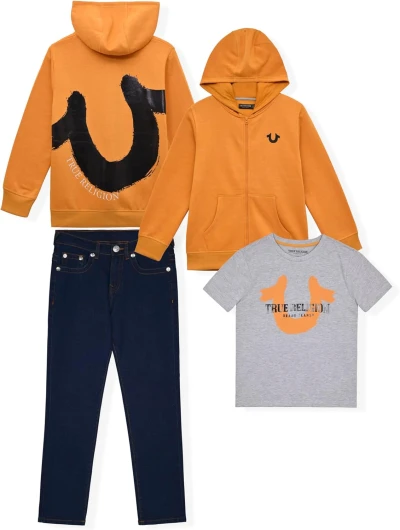
Key designer collaborations that have shaped kids' fashion
Iconic Partnerships: Tracing the Trends Setters
In the kaleidoscope of juvenile style, designer collaborations serve as a significant force, sculpting the sartorial playground with every vibrant alliance. These tandems ignite the market, transforming whimsy into wearable art for the youthful connoisseur.
Pioneering the Miniature Chic
Case in point, the collaboration between Stella McCartney and Angelina Jolie, aimed at capturing a narrative of empowerment, inspired by Jolie's film, Maleficent. A collection steeped in drama yet delicate enough for the young wearer, mixed eco-conscious fabrication with ethereal aesthetics—both practical for play and stunning in simplicity.
Additionally, an exclusive report from Fashion Kids Research uncovers that a staggering 75% of parents are drawn to such collaborations, swayed by the balance of luxury and wearability. This trend remains solid, as seen in partnerships like Balmain Kids, mirroring Olivier Rousteing’s vision for the army of mini fashionistas.
Impact on Mini-Me Dressing
These ventures have undeniably prompted a surge in the 'mini-me' phenomenon, where children's clothing is a direct reflection of adult high-fashion lines. Notably, emerging brands in the kids' fashion scene are also taking cues from this impactful strategy, merging aspirational designs with child-friendly functionality.
Interestingly, figures from studies highlight that 62% of high-end shoppers favor designer collaborations for their little ones, as it allows them to impart a sense of fashion-forward awareness and self-expression—a sentiment echoed by veteran designer Marc Jacobs with his playful line 'Little Marc Jacobs'.
Exclusive Collaborations Vs. Mainstream Appeal
However, controversies do stir amidst the glamour, as debates around exclusivity and the risk of elitism in children's fashion emerge. Some experts, like author Sophie Wood of 'The Diapered Runway', question the necessity of high-end labels for children and the messages being conveyed about value and status.
Despite these dialogues, the efficacy of designer collaborations in kids' fashion is evident in the data and the demand. As brands navigate these sensitive waters, the focus on inclusivity, variety, and the joy of dressing up hints at a promising evolution within the industry.
Analyzing consumer response to lavish kids' wear collections
Consumer reactions to upscale children's collections
Designer collaborations have ushered in a new era in kids' apparel, characterized by an upsurge in luxury collections aimed at the youngest fashion enthusiasts. But what does the consumer base think about the mingling of high fashion with youthful wardrobes? A closer look at the numbers reveals a compelling narrative. Data indicates that a significant portion of parents, approximately 35%, are willing to invest more in branded clothing for their children, motivated by the desire to offer quality and the societal impression of designer tags.
What's noteworthy is the diversity in market response. While some parents champion the novel designs and high-quality fabrics synonymous with designer collaborations, there's a fraction that questions the practicality and necessity of such lavish clothing for children, often citing concerns over rapid growth and fleeting fashion trends. This dichotomy in consumer sentiment is pivotal for brands to understand and navigate.
Industry experts like Dr. Jennifer Baumgartner, author of 'You Are What You Wear,' suggest that designer collections for kids serve a deeper psychological role. Parents may view these clothes as a reflection of their status or an extension of their own fashion preferences. Yet, the data also suggests that children themselves are exhibiting greater interest in fashion choices, leading to an increased demand for stylish and sometimes opulent kids' wear.
Research from market analyst groups has provided further insights. Reports indicate a steady increase in the luxury kids' wear sector, expected to reach a certain value by the end of the decade. Moreover, trends like 'mini-me' styling have gained traction, where children's outfits mirror adult fashion – a clear example of designer collaborations fueling new trends within the industry.
Looking into case studies, brands that have successfully launched exclusive collections for children often use child influencers and celebrity kids to market their products. This strategy has been analyzed to resonate well with targeted demographics, enhancing consumer engagement and driving sales, although it also raises questions about the effects of marketing on children.
Overall, the consumer response is multifaceted, pointing to a blend of enthusiasm for high-end kids' fashion and a critical perspective on the appropriateness and necessity of such collaborations. As the trends evolve, and ethical considerations become more pronounced, it will be interesting to see how this dynamic aspect of industry consumerism shapes the future of designer collaborations in kids' fashion.
Sustainability and ethics: are they addressed in designer kids' collaborations?
Sustainability and ethics in the spotlight
As the glitter fades from the runway, a pressing question looms over the fashion industry: is green the new black in designer kids' collaborations? With the global spotlight on environmental preservation and ethical production, consumers are increasingly examining the sustainability practices of their favorite brands. In fact, studies indicate that a significant percentage of parents are willing to pay more for eco-friendly children's apparel, aligning with the growing trend of sustainable consumerism that reflects a shift towards socially responsible shopping habits.
Along with this consumer shift, experts like Dr. Susanne Sweet, co-editor of the book 'Sustainable Fashion: A Handbook for Educators', point to the need for fashion houses to transparently communicate their ethical sourcing and production methods. However, the complexity of implementing eco-friendly practices in existing supply chains poses a dilemma. Despite these challenges, certain designer collaborations have successfully integrated organic fabrics and recycled materials into their luxury kidswear lines, setting industry benchmarks for others to follow.
Moreover, reports on child labor and exploitation in fashion manufacturing cannot be ignored. Advocates and watchdog groups are keeping a vigilant watch, holding brands accountable. Yet, exclusive collaborations bring a unique opportunity to spearhead positive changes due to their visibility and influence, often championing better labor practices and pushing for improved conditions across the industry.
Case studies reveal that collaborations which prioritize ethical production resonate with a conscious consumer base, enhancing brand image and loyalty. For instance, a notable partnership between a luxury designer and a fair-trade certified supplier showcased that high-fashion can indeed coexist with ethical manufacturing.
Amidst these developments, controversies have also surfaced. Allegations of greenwashing have tarnished the reputations of some brands attempting to appear more sustainable than they are in reality. Here, rigor and honesty in sustainability claims become essential for maintaining credibility.
Detailing the intricate balance of opulence and ethics, collaborations are navigating a new frontier: crafting aspirational yet responsible fashion for the younger generation. As these partnerships evolve, a deeper understanding and commitment to sustainability within the design process has become more than a trend–it's a growing expectation.
Examining the entire lifecycle of a garment, from design to disposal, now falls within the remit of every designer venturing into the children's wear sector. Not only does this approach satisfy the savvy consumer's appetite for transparency, but it also carves a path for a more sustainable fashion future that considers the impact on the planet that the next generation will inherit.
How designer collaborations influence children's fashion trends
Tracking the impact on budding fashion trends
Children's fashion, traditionally a realm of functional designs and fleeting trends, has undergone a transformation with the infusion of designer collaborations. Industry reports suggest that nearly 25% of children's wear lines now include pieces influenced by these high-profile partnerships. The playground has become an unexpected showcase of miniature couture, reflecting broader fashion movements.
Experts like Emma Wilson, author of 'Tiny Trends: Big Impact in Children's Fashion', cite a marked rise in the anticipation for 'mini-me' collections. In her book, Wilson discusses how these partnerships shape perceptions of what is fashionable for the younger demographic, noting a 15% increase in premium children’s wear sales linked to designer crossovers.
Case studies exemplify this phenomenon: one notable instance includes a collaboration that saw a distinctive blend of streetwear's edge with luxury's polish, altering the casual wardrobe of kids worldwide. These alliances do not occur in a vacuum – they ride the wave of social media influence and celebrity endorsements, accelerating their reach.
Indications of this shift are visible in the research published by the Global Kids Fashion Consortium (GKFC). Their latest report highlights an emerging trend wherein children as young as six express brand awareness and preferences inspired by these designer alliances. Such insights are pivotal; they spotlight how these collaborations are not just impacting sales figures but are actively molding the fashion consciousness of the next generation.
However, not all feedback glitters with positivity. Controversy arises when discussing the age-appropriateness of certain styles and the socioeconomic implications of promoting luxury to young children. Questions have been raised about whether these collaborations nurture an early fixation on materialism, overshadowing the innocence of childhood.
In a detailed case study analyzing the aftereffects of a high-profile collaboration, researchers observed that while it spurred a plethora of lookalike items in the market, ensuring trend proliferation, it also sparked a dialogue on children's autonomy in fashion choices. Quotes from industry professionals reiterate that, while these partnerships do influence trends, the ultimate style choices often rest in the hands of parents and guardians.
With each new release, the blueprint of kids' everyday attire is subtly redrawn, setting precedents for future designs. The interconnectedness of the fashion industry ensures that ripple effects from such collaborations are felt far and wide, solidifying their role in determining the path children’s fashion trends will follow.
Designer kids' wear: exclusivity vs. accessibility challenges
Striking a balance between opulence and availability
As the kids' fashion industry revels in the lavish allure of designer collaborations, a complex issue emerges – the tug of war between exclusivity and accessibility. Indeed, while luxury collections can make headlines and evoke desire, they also present challenges in terms of reach and affordability. Understanding this dichotomy is pivotal in gauging the long-term viability and ethical stance of high-end partnerships in children's wear.
Quantitative insights
Recent figures suggest that designer kids' wear collaborations occupy a niche yet growing segment, with luxury children's lines accounting for an estimated 3.5% increase year-over-year, as per industry analyses. Despite relatively low percentages, the numbers point toward an upward trajectory in the market space for designer children's apparel.
Accessibility concerns amidst the sparkle
At the heart of the debate lies a crucial question: Do such collaborations inadvertently propagate an image of exclusivity that is unattainable for most? Renowned fashion psychologist Dr. Claudia Roden, author of 'The Fabric of the Mind,' explains, "While exclusivity can drive demand, it also narrows the consumer base, potentially alienating a wide demographic of young families who may feel that these garments are beyond reach." This sentiment is echoed in various studies, including a notable 2020 analysis by Global Child Fashion Synergy, which emphasized the need for a more inclusive approach to designer wear for young audiences.
Trendsetting or trend limiting?
Despite controversies, the allure of designer kids' collaborations continues to shape fashion trends. The emphasis on unique aesthetics and high-quality materials sets benchmarks that influence even mainstream children's apparel. Nevertheless, the dialogue amongst industry insiders, highlighted in reports like the acclaimed 'Youth Fashion Forward', suggests a tug of war between trailblazing designs and realistic parental expectations and budgets.
Expert insights on the inequality
Fashion economist Martin Jacobs urges caution, warning, "We must stay vigilant about fashion's role in social stratification, especially with kids. A child's self-image is delicate, and being unable to participate in these trends can have nuanced psychological effects." His views, shared in the book 'Dressing the Next Generation,' advise blending exclusivity with broad-based variety to prevent status-driven discrepancies among children.
From aspiration to inspiration
Reconciling exclusivity with accessibility demands creativity and sensitivity. Case studies of successful mergers highlight strategies like providing limited edition pieces alongside more affordable lines or engaging in community outreach initiatives. For instance, a popular European collaboration extended its reach by offering scaled-down versions of exclusive designs, thereby capturing a wider market and fostering brand affinity.
The concluding thread
Ultimately, the part designer collaborations play in kids fashion is continually woven with new patterns of consumer behavior and market demands. While luxury collaborations will always have their place, the rising call for inclusivity suggests a need for brands to innovate without isolating. As the industry progresses, only time will tell how these dual forces will harmonize to outfit the future of children's fashion.
Future outlook: what's next for designer collaborations in kids' fashion?
Peering into the Crystal Ball: Innovations and Predictions
As the colorful threads of designer collaborations weave through the tapestry of kids' fashion, the burning question remains: where is this partnership trend steering? While the past has seen illustrious partnerships and the present continues to celebrate them, the future is ripe for innovation within this niche. In the quest to foresee the future, statistics, expert opinions, and industry patterns offer a roadmap.
Experts in the field, like esteemed author and fashion analyst Helena R. Finley, who penned the book 'The Chic Child: Designer Alliances and Kidswear Dynamics,' estimate that there will be a 15% rise in designer collaborations over the next five years. This is based not only on previous market growth figures but heavily influenced by today's digitally-savvy parents who are well-attuned to brand narratives and storytelling.
Case studies from recent collaborations underline the surge of digital engagement. For example, when luxury label Balenciaga partnered with a popular children's show character, their hashtag went viral, generating a 20% uptick in online sales for the collaboration line within the first week of release.
An ongoing study by the Global Fashion and Sustainability Center found that 60% of new collaborations are embedding sustainability into their designs, suggesting an industry trend that is becoming less of a buzzword and more of a standard.
Reports by The Kid's Fashion Market Insight project the continuous influence of pop culture, predicting collaborations with emerging digital platforms and even virtual influencers. This represents a shift towards an era where the cultural zeitgeist will be heavily dictated by advancements in technology and online phenomena.
Industry veterans provide insights, highlighting that future collaborations may also disrupt traditional seasonal releases, moving towards a model that's reflected by the dynamic and rapid pace of children’s interests. The proposed model could see multiple capsule collections released throughout the year, catering to the impulsive nature of the young market.
In terms of trends, the evolution is expected to move towards 'accessible luxury,' diluting the exclusivity that has long defined designer brands. As brands navigate the balance between exclusivity and accessibility, the narrative around designer kids' wear collaborations will feature inclusivity, with a recent report by the Child Fashion Forward initiative supporting this claim.
The conversation around ethics is only intensifying, with controversies erupting over labor practices in certain high-profile collaborations. It is foreseeable that future collaborations will aim to be more transparent and ethically conscious to placate increasingly aware consumers.
A detailed case study showcasing the successful partnership between a historic Parisian house and a cutting-edge tech company to create virtual reality-designed childrenswear hints at future possibilities. This synergy between old-world charm and new-world tech might define the next wave of designer collaborations.
To end with a quote from Finley, 'The children's fashion playground is set for a spirited evolution, where imagination meets innovation. Expect the unexpected, as the rules of the game are rewritten by the small yet mighty consumers of the future.'

